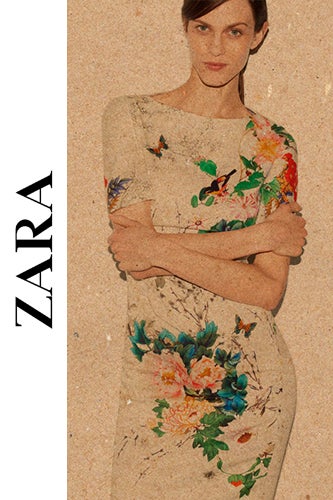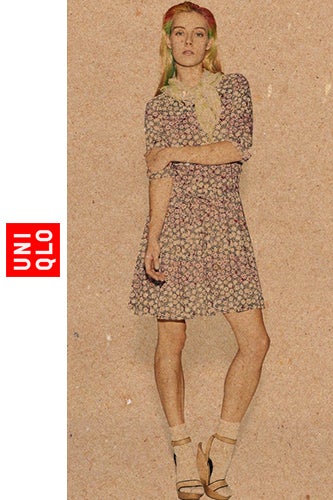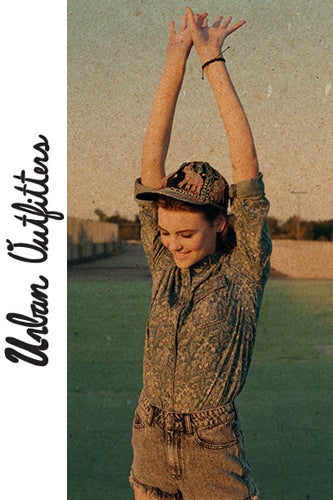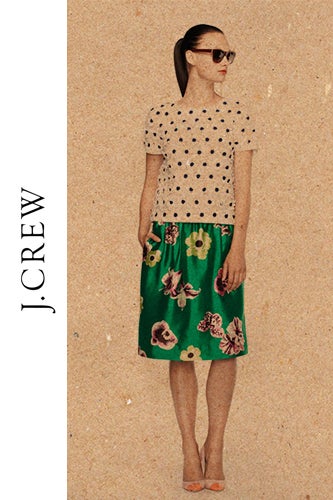This article was last updated on April 16, 2022
Canada: ![]() Oye! Times readers Get FREE $30 to spend on Amazon, Walmart…
Oye! Times readers Get FREE $30 to spend on Amazon, Walmart…
USA: ![]() Oye! Times readers Get FREE $30 to spend on Amazon, Walmart…
Oye! Times readers Get FREE $30 to spend on Amazon, Walmart…
It’s that time of year: This weekend, you might be taking some old faithful closet staples out of storage and maybe freshening up your wardrobe with a shiny new something special. But before you start scouring your go-to shops for seasonal upgrades, think for a moment. Where does your most beloved clothing come from? Yes, you bought them in a store or online, but who makes your clothing? Where — and in what country — is the fabric made and assembled? What environmental and ethical conditions help bring your sartorial standbys to you?
Child labor, overworked and underpaid employees, energy and water overconsumption, toxic waste — it’s heavy stuff to think about, but it’s the reality of much of fashion’s mass production. “The clothing we wear reflects the choices we make: thousands of economic votes that have the power to shift the clothing industry,” explains Zane Wilemon, executive director of CTC International and eco-clothing-brand L.I.F.E. Line. Sustainable fashion: It’s not a new concept, but retailers are examining the effects that production is having on the environment. They are making huge changes to their business models and producing clothing made from organic fabrics and dyes, using recycled materials, and making sure that factory workers receive fair wages, time off, work in safe and clean conditions, and get training on eco-friendly production techniques.
Says Wilemon, “The clothing industry plays a very significant role in global sustainability. Customers should start asking where materials are sourced and find out exactly what are the working conditions of the people making this clothing…after asking those questions we may not like the answers, but that’s where change begins.”
Where to start? We do some of the work for you and examine how some of our favorite mass-consumer fashion brands design and produce their collections with the environment in mind. Read how upfront these major retail players are with customers and if they measure up against our transparency test. Our findings may surprise you…

Forever21 — Cheap-chic retail purveyor Forever 21 would appear to be too affordable to be eco-friendly, but the brand has been working toward several sustainable programs for years now. To make sure that production is absolutely fair and sustainable, Forever 21 says it “enters into a comprehensive agreement.” It must utilize legally qualified workers, pay them fair wages in their respective countries, and “provide an environment that complies with their legal requirements.”
Forever 21’s program also says that it ensures that factory workers receive time off, free association rights, non-discrimination, environmental protection, security, and absolutely prohibits the use of forced, slave, child, or prison labor. To make sure this kind of fair treatment happens, Forever 21 pays visits to factories, and after each factory visit, the “Vendor Compliance Team” evaluates each factory to flag unjust practices.
Forever 21 is also very active in charity work:Its Give to Love Love to Give clothing brand raised more than $9.5 million for charity in 2011. Forever21 has also partnered with nonprofit organization FEED to help source environmentally friendly and artisan-made materials to help it along with fair-labor production and provide 71,120 meals for African families in need. It also helped drill 40 wells in Samburu, Kenya, to help bring water to African communities who were once walking miles to water wells — 26 villages and more than 1,500 people have better access to clean water.
Transparency: Medium
Ethical fabrics/care for the environment: Yes
Worker Treatment: Yes
Donations to charity: Yes

H&M — One of the first brands to really champion mass eco-chic fashion with its Conscious collection, Swedish retailer H&M continues to carry the torch with a newly launched spring ’13 line and takes it even further by hosting a recent panel discussionthat brought eco-fashion experts together atVogue’s headquarters to discuss how it and other global fashion brands can be more sustainable.
In 2012, the brand became the top user of organic cotton in the world and donated 3.2 million garments to charities as a part of itsDon’t Let Fashion Go to Waste campaign, which encourages customers to bring in clothes from any store and get H&M savings coupons.
The brand also claims to have saved more than 450 million liters of water during denim production: It has partnered with the World Wildlife Fund to create the Better Cotton Initiative, a program that reduces water waste that happens when cotton is harvested, processed, and washed.
H&M aims to lead the fashion industry toward zero discharge of hazardous chemicals by 2020. The brand wants to be completely transparent with customers — it even has its supplier list posted online per country, complete with factory addresses and supplier contact names (no emails or phone numbers though!).
Transparency: High
Ethical fabrics/care for the environment: Yes
Worker Treatment: Yes
Donations to charity: Yes

Zara — Its ability to take runway-inspired designs from drawing table to rack in a matter of weeks and its cult-popular e-shop has helped Zara’s exponential retail rise over the past three years. The Spanish brand is owned by mega fashion conglomerate Inditex, which also owns Massimo Dutti, Pull and Bear, and many more.
Zara is one of several brands that joined withGreenpeace’s Detox Campaign to work toward toxic-free production. The brand has a detailed mission statement on its website where it assures that it uses organic cotton and PVC-free footwear along with ensuring that it recycles and that it has “an environmentally aware team.”
Despite this, there has been come controversy over how Zara treats its employees. According to the Daily Mail, factory workers, some of them children, “were made to work up to 16-hour days without breaks and were prevented from leaving the factories without permission.” And in Buenos Aires, claims were made that workers clocked in at 7 a.m. and didn’t leave the factory until 11 p.m. routinely from Monday to Saturday. No breaks.
Transparency: Medium-Low
Ethical fabrics/care for the environment: Yes
Worker Treatment: Poor
Donations to charity: None

Uniqlo — This Japanese retail success story has built its empire on making basic items: cotton work shirts, streamlined down jackets, synthetic thermal underwear, and denim. Uniqlo has a surfeit of sustainability programs on the go. It launched Clothes for Smiles in collaboration with tennis player and Uniqlo global brand ambassador Novak Djokoviclast fall to fund one billion yen for children in need.
Uniqlo has also created its Grameen Uniqlo“social business program” in Bangladesh, which helps address some of the country’s poverty, health, sanitation and education issues. The project’s target: 1 million product units and 1,500 jobs within three years.
As for employee treatment, Uniqlo’s work-life mandate provides limits on overtime, year-long maternity leave for men and women, and reduced hours until children are in grade 4. While it doesn’t disclose details or stats on exactly how it maintains sustainable production practices, Uniqlo says that it and its parent company, Fast Retail, produces goods with the environment in mind and “tries to reduce its impact on the environment at every stage of its business model, from planning, production, and logistics to sales and the disposal of waste.”
Transparency: Medium-High
Ethical fabrics: No info
Worker Treatment: Yes
Donations to charity: Yes

Urban Outfitters — The ultimate hipster trend purveyor is also owned by the same the company that finances Anthropologie, Free People, BHLDN, and Terrain. Parent company URBN follows the California Transparency in Supply Chains Act, which ensures commitment to conducting business in a lawful, ethical, and responsible manner, which includes certification, internal screening for new suppliers, regular audits, and sustainability training for factory workers.
While the brand supports eco-savvy brands —Urban Renewal, to name one — details on its production practices, fabrics, and how it makes its production more sustainable wasn’t easy to find or spelled out as plainly as other brand websites.
Transparency: Low
Ethical fabrics/care for the environment: Not sure
Worker Treatment: Not sure
Donations to charity: Not sure

J. Crew — Jenna Lyons, creative director of adorable brand J.Crew just seems to understand what women — and men — want in their wardrobes. Click your way over to the brand’s website, and it’s not hard to find a detailed (and very legally written) mandateoutlining J.Crew’s eco-efforts to the letter. Off-shoot brands Madewell and Crewcuts are also included in its sustainable mandate.
For a company that has built its fashion following by catalog, paper use is at the forefront of J.Crew’s sustainable model: In 2010, 60% of the company’s paper use came as a result of the J.Crew catalog. All J.Crew catalog paper is Forest Stewardship Certified, and all shopping bags are made of 100% recycled paper. Its Paper Procurement Policy ensures that only environmentally friendly vendors work with the brand, too. It holds frequent sustainability training sessions for suppliers to help each factory brush up on its eco-production practices. Since 2005, J.Crew has conducted five training seminars and have provided training to around 250 suppliers. The brand also has a Responsible Sourcing Program to make sure that materials are produced in the most ethical way possible. The RSP program addresses “risks in [its] supply chain, including the risk of slavery and human trafficking.”
To make sure sustainability is up to snuff, J.Crew has two full-time associates who are responsible for managing social responsibility and look to independent organizations to help complete factory inspections and factory training. Despite all of this, J.Crew is still working toward sourcing eco-friendly fabrics and building on its sustainability. In 2011, the brand said it started training its production team on the environmental impacts and reviewed what could be done to make clothing production more sustainable.
Transparency: Medium
Ethical fabrics/care for the environment:Somewhat
Worker Treatment: Yes
Donations to charity: Yes

Victoria’s Secret — Victoria’s Secret has been our go-to for undergarments for years, but how many of us have looked at whether our unmentionables are sustainably produced? Victoria’s Secret is taking a page from Zara’s eco-friendly book and aiming to reduce toxic waste by joining Greenpeace’s Detox Campaign.
However, last year, Victoria’s Secret suffered some scrutiny after Greenpeace revealed that phthalate levels in Victoria’s Secret garments (chemicals used to give garments more stretch and flexability) were as high as the levels found in recalled or banned children’s toys. Talk about a wake-up call. Now, the brand’s parent company, Limited Brands, has a super-comprehensive website with press releases on environmental, ethical, and charitable improvements.
Like J.Crew, Victoria’s Secret’s success also came from a paper-based catalog.PricewaterhouseCoopers reviewed Victoria’s Secret’s paper purchases and found that 88% of the company’s paper was Forest Stewardship Council (FSC) certified.
Additionally, factory workers get a 60-hour-a-week work cap and must take at least one day off per work week, but Bloomberg reported late last year that there have been investigations into allegations of child labor in Burkina Faso.
Transparency: Medium
Ethical fabrics/care for the environment:Somewhat
Worker Treatment: Yes
Donations to charity: Not sure
Designed by Zhang Qingyun
Click HERE to read more from Refinery29.

Be the first to comment